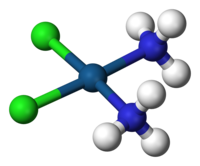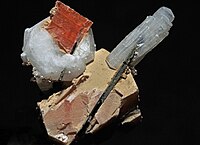
A Photoluminescent Cd(II) Coordination Polymer with Potential Active Sites Exhibiting Multiresponsive Fluorescence Sensing for Trace Amounts of NACs and Fe3+ and Al3+ Ions.
Sign Up to like & getrecommendations! Published in 2021 at "Inorganic chemistry"
DOI: 10.1021/acs.inorgchem.1c00022
Abstract: The elaborately designed π-electron-rich fluorescent ligand 1,4-bis(1-carboxymethylene-4-imidazolyl)benzene (H2L), possessing bifunctional groups including the carboxylate groups (building units) and 4-imidazoyl groups (N-donor potential active sites) has been employed to construct fluorescent coordination polymers. A luminescent sensor,… read more here.
Keywords: active sites; coordination; fe3 al3; trace ... See more keywords

Fabrication and DFT Calculation of Amine-Functionalized Metal-Organic Framework as a Turn-On Fluorescence Sensor for Fe3+ and Al3+ Ions.
Sign Up to like & getrecommendations! Published in 2022 at "Inorganic chemistry"
DOI: 10.1021/acs.inorgchem.2c02195
Abstract: Due to their important role in biological systems, it is urgent to develop a material that can rapidly and sensitively detect the concentration of Fe3+ and Al3+ ions. In this work, a brand-new CdII-based metal-organic… read more here.
Keywords: fe3 al3; metal organic; fluorescence; al3 ions ... See more keywords

Template-directed synthesis of a luminescent Tb-MOF material for highly selective Fe3+ and Al3+ ion detection and VOC vapor sensing
Sign Up to like & getrecommendations! Published in 2017 at "Journal of Materials Chemistry C"
DOI: 10.1039/c6tc05349a
Abstract: A flexible bidentate polyaromatic acid ligand 4,4′-oxybis(benzoic acid) (H2oba) was used for the construction of a novel luminescent Tb(III)-based metal–organic framework (MOF), namely {(Me2NH2)[Tb(OBA)2]·(Hatz)·(H2O)1.5}n, with 3-amino-1,2,4-triazole (Hatz) as the template reagent. In the structure of… read more here.
Keywords: detection; luminescent mof; fe3 al3; luminescent ... See more keywords